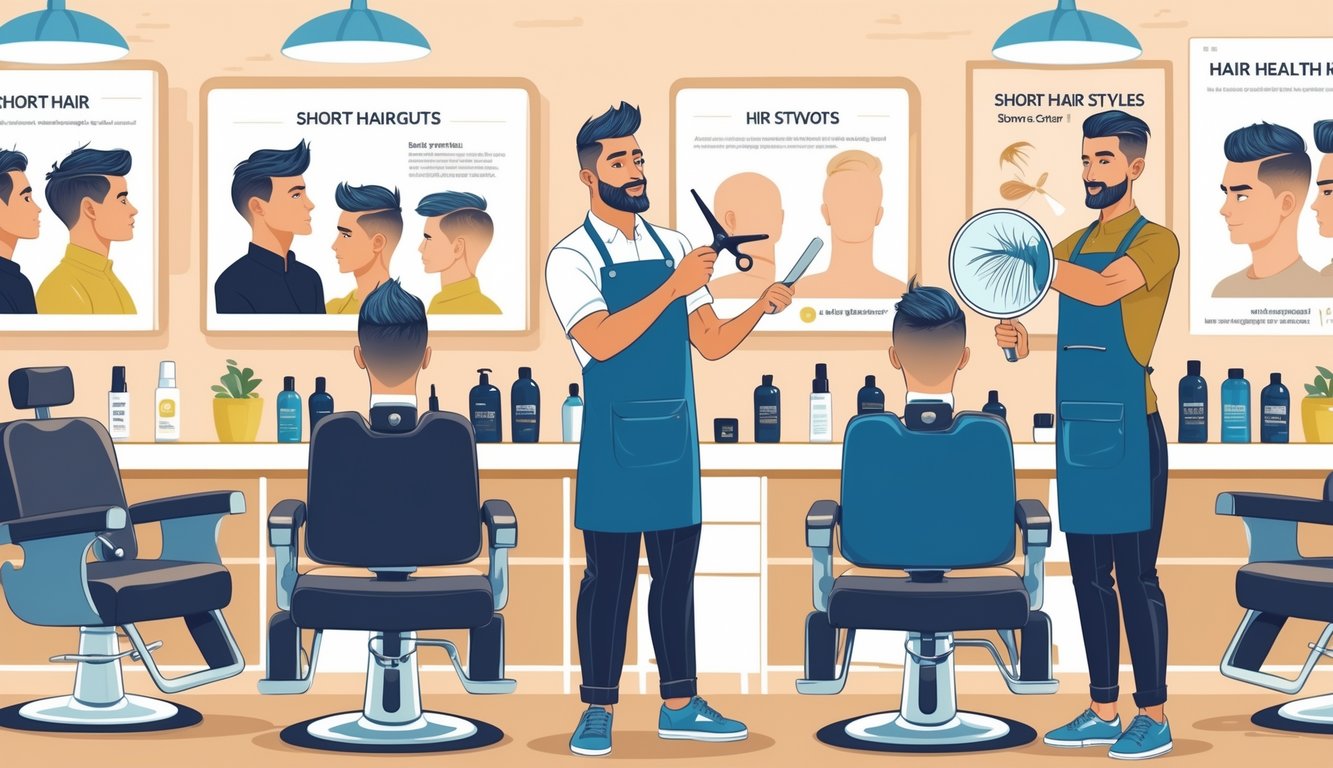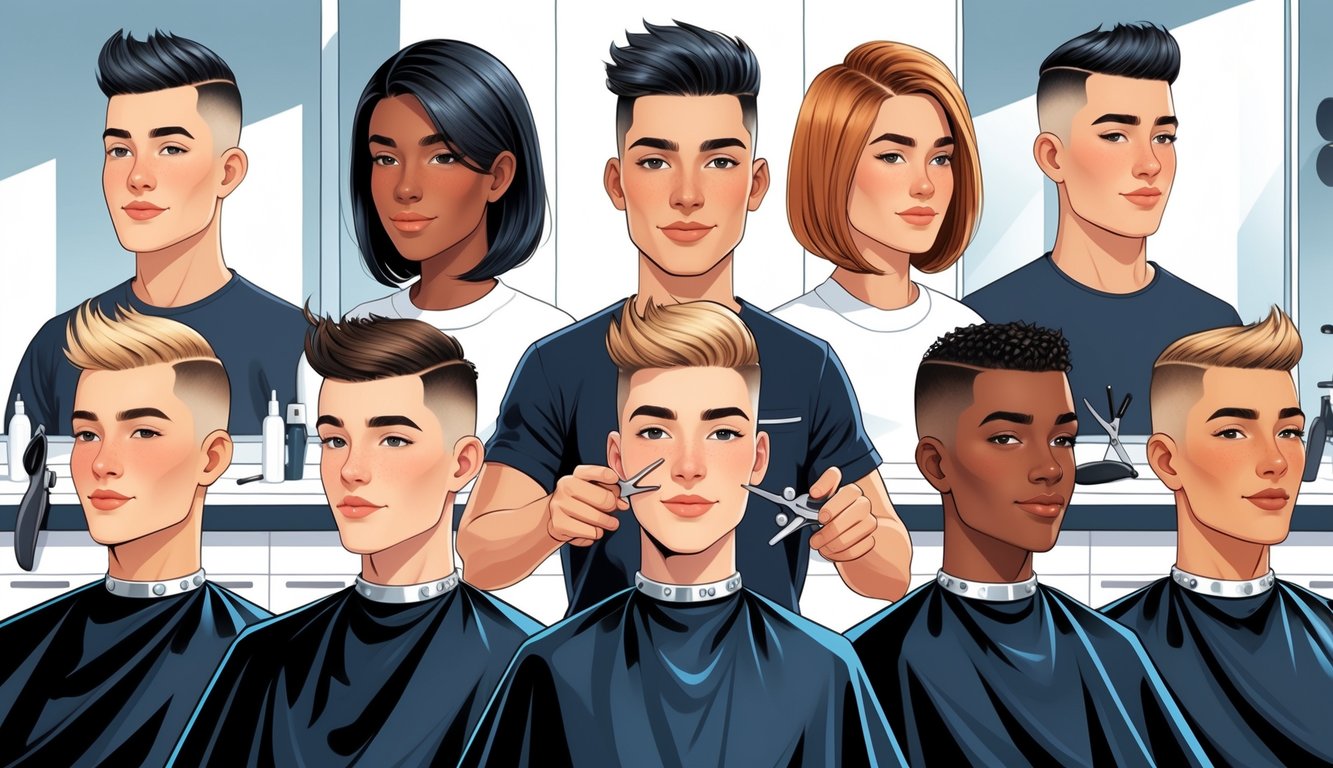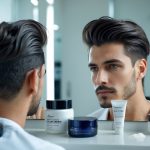
Styling Tips for Straight Hair
Straight hair people are always like, “How do I get texture without frying my hair?” Barbers don’t blunt-cut everything—they go in with texturizing shears, which sounds scary but actually saves you from helmet head. Ruth Negga’s short cut gets tons of attention, and it’s just smart layering. Lightweight mousse on damp hair is the move, apparently.
Also, weird tip: super clean hair is impossible to style. Barbers spray in dry shampoo even on wash day—just for grip. Straight hair shows every mistake, so these stylists cross-check every section for movement, not just symmetry. The most underrated trick? Flip your head upside down and air dry. Looks ridiculous, works like magic. A stylist at Ciel Hair Salon told me that, and I still do it.
Texture and Volume Considerations
This is where people start acting like it’s rocket science, but really, everyone just wants their hair to not be sad. Thick or thin, people ignore advice and then wonder why their cut flops. Fine hair folks chase volume; thick hair people just want to avoid helmet head. I once suffered through a colorist’s rant about “graduated weight lines” before realizing it just means “hide the bulk with layers.”
Humidity? No one warns you about that. Your perfect style turns into a puffball by lunch. Barbers add texturizing powder (which is basically cornstarch, let’s be real) to soak up sweat and keep things looking matte, not chalky. People with combo textures—like wavy up top, straight underneath—need to just admit it up front, because their cuts require a Frankenstein approach.
Everyone’s obsessed with the “voluminous bob” thing. Upside-down blow-drying, root sprays, round brushes, but no one uses rollers anymore. A barber once told me to hit my roots with cold air after styling to lock in volume. There’s a study linked on Virtutiss that basically says most short hair problems—dryness, limpness—are from skipping at-home care, not the cut. So, yeah, maybe don’t blame your stylist.
Face Shape Vs. Short Haircuts

Last week, someone told me her round face meant she’d look like a dandelion if she went short. I didn’t laugh, but I wanted to. People act like face shape is destiny, like there’s some secret formula only barbers know. Nope.
Consulting a Pro Barber for the Right Cut
My DMs are a mess. “Will a pixie make my jaw look huge?” “Can I get an undercut if my forehead is the size of a billboard?” There’s no chart for this stuff. Technique and tools matter way more than geometry. Textbook advice is always like, “Round faces need volume on top!” but what if you don’t want to look like you’re auditioning for a boy band? This stylist breakdown says bone structure helps, but it’s not the law. I’ve seen square faces with sharp crops, heart shapes with bangs, and somehow no one burst into flames.
Here’s the real secret: the best results come from little tweaks you never see online—layer placement, fringe density, and just asking what you fight with every morning. You want a pro, not an app, to spot your cowlicks and tell you what actually looks good from behind. If these rules really worked, why do celebrities break them every single month and still land magazine covers?
Individualized Approach Over Generic Rules
Look, haircut guides are everywhere, right? “Square face? Long bob. Round face? Try asymmetrical.” Sure, okay. I’ve fallen for those charts—who hasn’t?—but in real life, unless your hair grows like it’s following geometry homework, it’s a mess. Cowlicks, double crowns, hairlines that zigzag like they’re lost—none of that fits the rules. I keep threatening to make a meme: “Generic Rules Ruin Great Hair.” But honestly, who’s scrolling captions under the dryer?
I once gave a stacked bob to a teenager with a jawline you could use as a protractor. She pulled it off, because she owned it, and her hair’s natural wave did most of the heavy lifting. Triangle head averted, miracle achieved. There’s this Barbershop study that just says it: picking a cut by face shape alone is overrated. Why do people miss this? It’s about how the cut works with your hair’s weirdness, your morning routine, and what you’re willing to put up with at sunrise. That’s what actually matters.
Wildest example? Someone once asked for a buzz cut to “slim their cheeks.” Yeah, sure. Turns out, hair density, product, and even how the neckline’s edged can change the whole vibe way more than your face shape. Real skill is about balancing features, not following some formula from a magazine. If it was all rules, why bother personalizing anything?
Myth: Short Hair Needs Less Maintenance
Every time I drag myself to a 6am trim—again—I wonder why nobody warned me that short hair’s “easy” reputation is a straight-up lie. You can’t just skip the salon for a couple months or use that random shampoo you found at the back of the cupboard. It’s a different beast, and honestly, it gets old fast.
Maintenance Routines for Short Hair
Barbers will smirk if you claim, “Short hair’s low-maintenance.” Maybe if you’re half-asleep and don’t look in the mirror. People think it’s “wash and go”—nope. Trims every three or four weeks, sometimes sooner. If you wait, the shape’s gone and you look like you gave up. Never enough time, always freezing in the chair, and your “relaxed” salon turns into a panic station when your cut morphs from crisp to chaos in less than a week.
My mornings? Bedhead everywhere. I spray water, run some product through—wax or pomade, depends what’s left. Sometimes I try a flat iron or round brush, but only if my hair’s not being stubborn. London barbers will tell you: the constant need for trims and styling keeps the myth alive that short hair saves time—it’s usually the opposite. I’ve wasted a ridiculous amount on clippers, thinking I’d save money. I didn’t.
Recommended Hair Products for Upkeep
It’s honestly wild how much attention five centimeters of hair demands. I bounce between texturizing wax (Redken Rewind is my go-to), random clays, and those “miracle” sprays that somehow leave my hair crunchy but… whatever, it helps on cowlick days. High-quality sulfate-free shampoo is a must. Cheap stuff? It strips out everything good faster than a rainstorm ruins a wedding.
Barbers keep pushing styling creams—lightweight, not greasy, just enough hold to fake effort. I caved and tried a conditioner for “hydrating short styles” (felt silly, but it’s actually decent). Pollution? Clarifying shampoo, but not more than once a week unless you want your scalp to feel like sandpaper—learned that the hard way. Buying products made for short hair isn’t just marketing. It’s survival, especially if your hair does its own thing the second it rains. So many tiny bottles. No more excuses.



